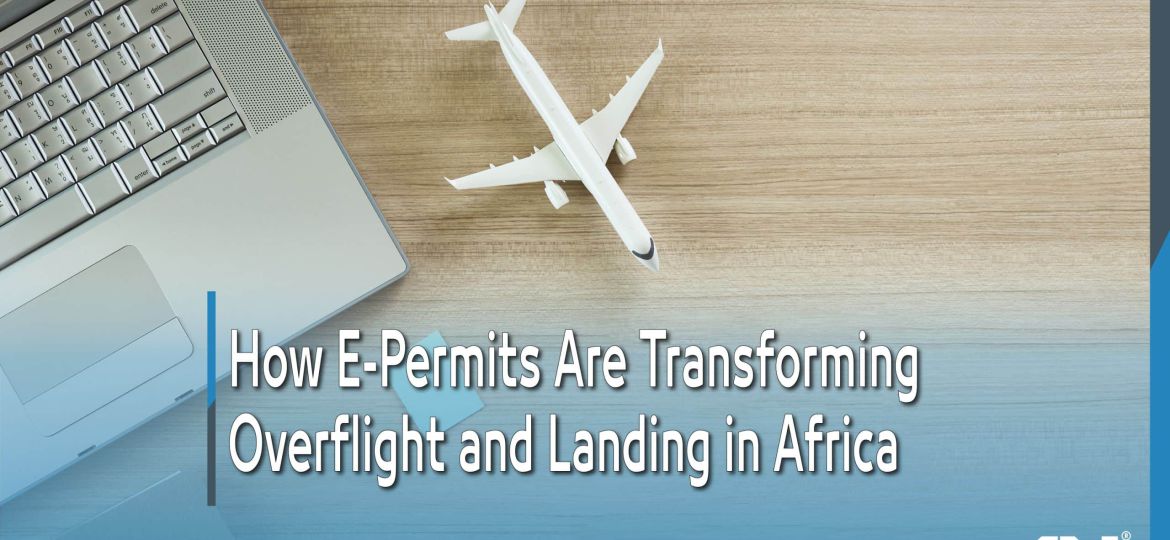
Africa’s aviation industry is undergoing one of its most important digital transformations in decades. As air traffic across the continent grows steadily and international operators increasingly rely on efficient and timely services, the traditional, paperwork-heavy systems for overflight and landing permits have become a pressing obstacle.
In response, many African nations are now transitioning to e-permit systems, fully digital platforms that manage the application, review, approval, and issuance of overflight and landing permits online. This evolution isn’t just about technology adoption; it’s about enhancing operational efficiency, improving airspace management, and aligning Africa with global aviation trends.
How E-Permits Work?
To understand the efficiency of e-permit systems, here’s a typical digital permit application process:
Online Application Process:
Operators visit the civil aviation authority’s official e-permit portal for overflight and landing permits. The portal usually includes guidelines, document requirements, and fee schedules.
Creating an Operator Account:
The operator must register their company profile, including:
- Operating licenses.
- Contact details.
- Insurance certificates.
- Air Operator Certificate (AOC).
Uploading Required Documents:
For each flight request, operators upload:
- Aircraft registration documents.
- Airworthiness certificates.
- Insurance policy copies.
- Crew passports and licenses.
- Flight plans and schedules.
Automated Verification Systems:
Once submitted, the system verifies documents against internal databases or external aviation registries to confirm validity and compliance.
AI-Powered Document Checks:
Advanced systems now utilize AI to check document completeness, identify inconsistencies, and flag missing information in real time, reducing human error.
Instant Fee Calculations & Payments:
The system automatically calculates permit fees based on aircraft type, route, flight duration, and applicable overflight or landing charges. Operators can then pay securely online using credit cards or digital wallets.
Why Africa is Shifting to E-Permits?
1- Reducing Bureaucratic Delays & Paperwork
Historically, overflight and landing permits in Africa required submission through faxes, emails, or physical documents to civil aviation authorities. Operators had to manage complex paperwork, track approvals manually, and navigate time zone differences, often resulting in delays and last-minute operational risks.
By shifting to e-permit systems, these bureaucratic hurdles are significantly reduced. Digital platforms allow operators to submit applications instantly, receive confirmations within hours, and track approvals in real time. This minimizes risks, especially for urgent or last-minute charter flights.
2- Improving Transparency in Permit Processing
A key benefit of digital systems is increased transparency. Operators can now log into centralized portals to:
- View permit statuses.
- Access processing timelines.
- Receive automatic updates and notifications.
- This ensures greater accountability within aviation authorities and eliminates the guesswork that often accompanied manual, paper-based systems.
Current State of E-Permits in Africa
1. Ongoing Transition to Digital Systems
Countries like South Africa, Kenya, and Nigeria are actively shifting from manual or semi-manual permit processes to electronic permit (e-permit) systems. These systems streamline the application and approval processes for overflight and landing permits, ground handling coordination, and airport slot management.
2. Early Adopters Leading the Way
Countries like South Africa, Kenya, and Nigeria have made notable strides. Their civil aviation authorities have online portals or email-based systems that improve processing times and reduce paperwork.
3. Mixed Infrastructure and Capacity
Some African nations, such as Chad, Sudan, the Democratic Republic of Congo (DRC), and Malawi, still rely heavily on manual permit processes or basic email communication due to several challenges:
- Limited funding for aviation tech infrastructure: For example, Chad and Malawi often process permits manually due to budget constraints and limited access to modern IT systems.
- Lack of harmonized regulations across regions: In DRC, coordination with neighboring countries remains inconsistent, leading to delays and duplicated procedures.
- Connectivity and cybersecurity challenges: Sudan and other post-conflict or low-infrastructure states face regular internet outages and lack of secure digital platforms, making full e-permit adoption difficult.
4. Regional Initiatives and Harmonization Efforts
The African Civil Aviation Commission (AFCAC) supports harmonizing aviation policies and promoting digital tools under the Single African Air Transport Market (SAATM).
SADC, ECOWAS, and EAC regional blocks are also encouraging digital modernization through joint aviation strategies.
Challenges in Implementation
Despite these successes, Africa faces several obstacles in fully adopting e-permit systems across the continent.
Limited Internet Infrastructure in Remote Areas
Some African nations, particularly in Central and West Africa, still struggle with unreliable or limited internet connectivity. This slows the implementation of online platforms, especially in conflict-prone regions and remote aviation hubs.
Resistance to Change from Traditional Systems
In several African countries, civil aviation authorities and operators remain deeply accustomed to manual workflows, making the shift to e-permit systems challenging.
Resistance often stems from limited digital literacy, lack of training, or fear of disrupting existing processes.
- Ethiopia: While the Ethiopian Civil Aviation Authority (ECAA) is digitally advancing in some areas, permit processing remains semi-manual, and staff are often more comfortable with traditional systems.
- Zimbabwe: The country’s aviation sector still uses legacy communication methods and has shown resistance to adopting fully automated systems without external pressure or incentives.
- Togo: Efforts to modernize have been met with slow uptake by both administrative and operational staff, citing concerns about retraining and potential job displacement.
Overcoming this resistance requires not just new technology, but investment in staff development, strong leadership, and clear government policies promoting digital transformation.
Benefits of E-Permits for Operators
The introduction of e-permit systems offers a wide range of operational, financial, and strategic advantages:
- Faster Processing Times: Digital systems drastically reduce approval times in many cases, from several days to mere hours. Some authorities even offer same-day approvals for urgent flights.
- Reduced Risk of Human Errors: AI-assisted document checks and automated data validation ensure more accurate applications and minimize costly mistakes or oversights.
- Cost Savings: E-permits eliminate administrative costs associated with printing, scanning, courier services, and long-distance communication. They also reduce penalties caused by late submissions or missing permits.
- Operational Efficiency: Operators can manage all permit requests, approvals, invoices, and flight schedules through a single digital dashboard, improving workflow management.
Security & Compliance in Digital Permits
With aviation security being paramount, e-permit systems are built with advanced security protocols:
- Blockchain for Fraud Prevention: Some modern systems incorporate blockchain technology to prevent permit forgery or unauthorized alterations. Every transaction is securely recorded, providing a transparent and unalterable audit trail.
- Secure Cloud Storage for Records: Permit documents, payment records, and operator profiles are securely stored in encrypted cloud servers, accessible only by authorized personnel.
- Compliance with ICAO Digital Standards: All digital systems must align with International Civil Aviation Organization (ICAO) standards, ensuring uniformity in security protocols, document requirements, and operational procedures across different jurisdictions.
Countries Leading the E-Permit Revolution
Africa’s progress in e-permit implementation is uneven but promising:
- South Africa & Kenya: These countries currently lead with fully operational, efficient digital systems.
- Nigeria & Ethiopia: Running pilot programs aimed at digitizing permit systems by 2025.
- Conflict Zones (DRC, Somalia): Political instability and limited infrastructure have delayed implementation, with most permits still processed manually.
The Road Ahead – Full Digital Integration by 2030?
Industry forecasts suggest that by 2030, the majority of African nations will have adopted e-permit systems for overflight and landing clearances. Predicted developments include:
- Mobile Apps for Last-Minute Permit Requests: Allowing operators to apply, pay, and track permits from smartphones ensures faster processing for emergency and urgent flights.
- Integration with Flight Planning Software: Linking e-permit systems with flight planning platforms enables automatic generation and submission of permit requests based on flight route data.
- Real-Time Airspace Notifications: Integrating permit systems with airspace management databases to provide operators with instant updates on restrictions, closures, and NOTAMs (Notices to Airmen).
The transition to e-permits for overflight and landing permits represents a major milestone for Africa’s aviation industry. While challenges remain, the long-term benefits of faster approvals, lower costs, improved security, and streamlined operations make this transformation both necessary and inevitable.
At An Aviation, we closely monitor these advancements and support our clients with reliable, up-to-date permit services in Africa and the Middle East. Whether you need overflight, landing, or technical stop permits, we ensure efficient, hassle-free clearances digitally or otherwise.
Get in touch with our operations team for expert support in securing overflight and landing permits across Africa. Contact Us.

